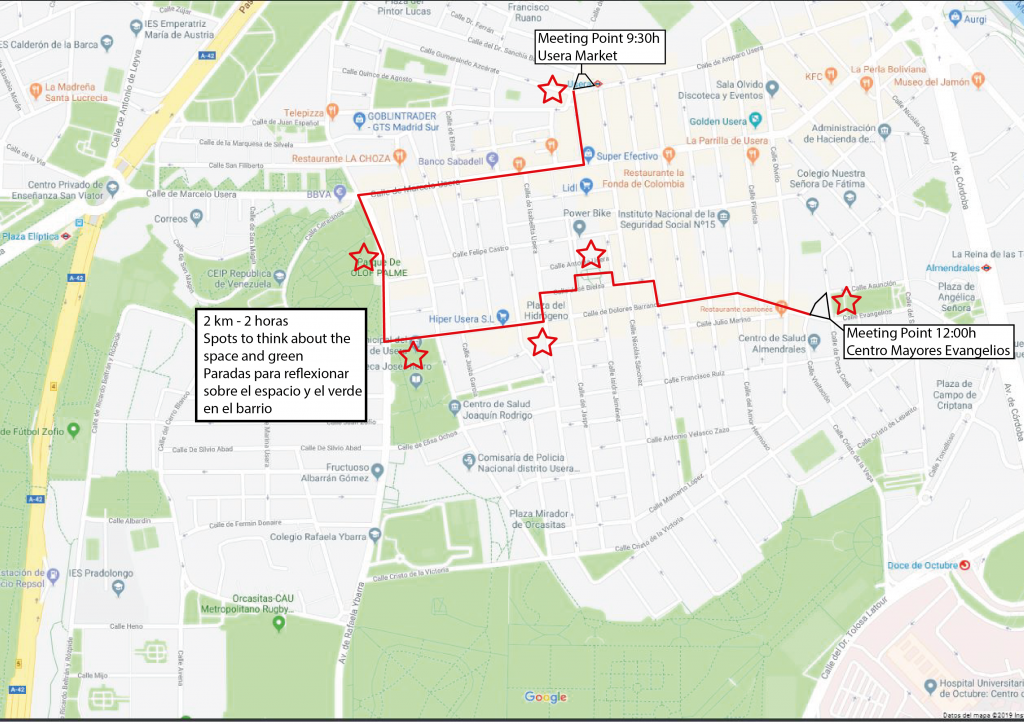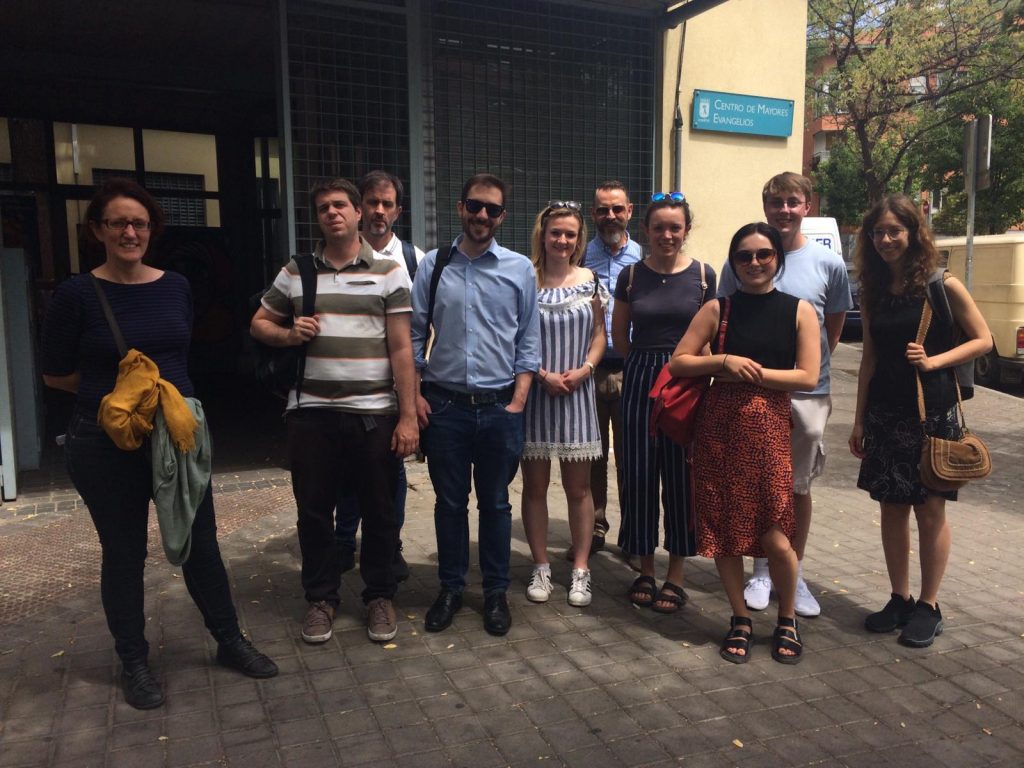
Thursday morning we visited the neighborhood with some of the representants of the Elderly Council, our Newcastle partners and students and UNI-Health ones. The main object of this itinerary was to analyse the connections of green areas in the north part of the district (Almendrales-Moscardó). We started our trip in front of Mercado de Usera (Usera Metro Station) and continue our way through the street Marcelo Usera until we reached Olof Palme Park. At this point, we made a little stop to talk about the things we have notices in this walk. First, it was very interesting to notice how green spaces are usually percieved as fresh and healthy areas, whereas this district is surrounded by the main pollutant roads of Madrid plus the Heat Island Effect, that increase the problems associated to air quality and heat stress. The street of Marcelo Usera was perceived as noisy and dirty, but the shops and activity were identified as interesting and vibrant points to be maintainted and reinforced, maybe with more pedestrian places to stay and sit. The elderly completed this perception with some interesting information about some of the spaces and services that are still in the neighborhood after more than 50 years.
The lack of accessibility in this neighborhood is evident and it supposes a challenge. However, this might be something to be solved by technicians but there are other problems in the neighborhood that could automatically change some of the mayor health problems. The lack of responsability for the dog’s poo are one of the main problems in the public space, not only parks and gardens, but streets and squares. This issue appeals to the responsability of the whole community, but some additional measures could be implemented in order to make the behaviour change faster, such as fines.
We continue our trip down park Olof Palme, direction Evangelios Daycare Center. Some spaces such as the Hydrogen Square were evaluated. In this case, it was ashtonishing to see still old phone boxes structures that now just take out space and vissibility. The lack of green spaces and comfortable places to stay is evident. This Square is in fact a crossroad, noisy and unsecure because of the cars.
Continuing down the street Dolores Barranco, we continue to find the same problem of pavements and pedestrian areas, bollards that are also everywhere (in order to avoid cars occupying the space but making it also dangerous to walk) and pedestrian crossings occupied by garbage containers and cars. In any case, everybody showed optimistic about the amount of diverse spaces that appear suddenly in the neighborhood and that could be transformed into a nice staying area to stay in. The rich diversity of cultures of the neighborhood is evident and these spaces could be a great intercultural and intergenerational meeting point.
Finally, we finished our morning trip visiting the Elderly Social Center of Evangelios. There we were welcome by the staff and direction team to explain all the activities and services the elderly have in this center. There were some interesting activities in collaboration with schools and high school centers to promote intergenerational meetings in an exchange session about philosophy, history and psychology, for example. Also a nice initiative that is getting attention is the creation of a urban garden in one of the schools but open to all the associations in the neighborhood, so everybody can take care of this communitary green place.

